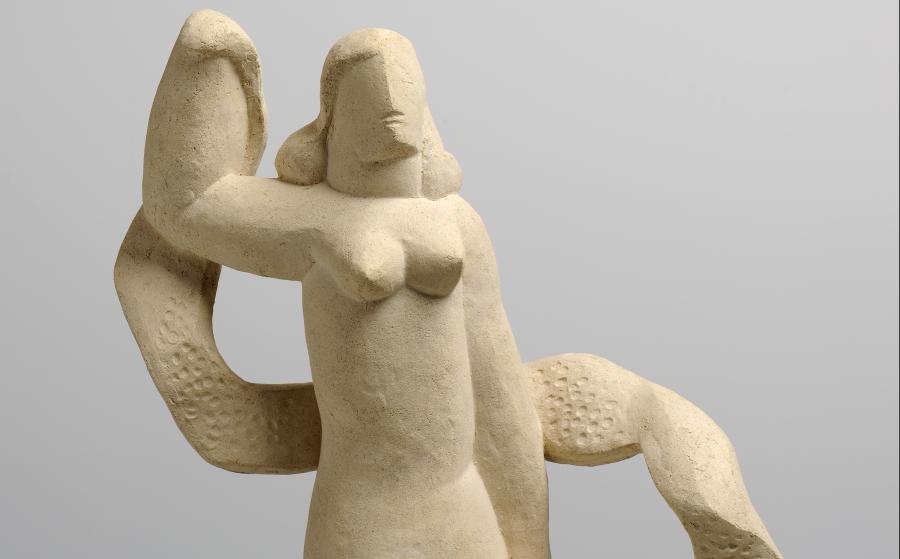Seated woman
Information sur l’artiste
Henri Laurens [Paris, 1885-1954]

Femme assise - Inv. 1958-17
Image © Lyon MBA - Photo Alain Basset
Born in Paris in a family of artisans, Henri Laurens began his training in a decoration studio in 1899. He established himself in Montmartre for the first time in 1902, returning there in 1911 after a period at La Ruche. It was during this time that he became close to Braque, who led him to discover Cubism, whose vocabulary he employed from 1915 in his first compositions and his papier collé works. For a long time, his work would evolve via an exchange of ideas with his mentor, and would follow his steps.
In the 1920s, both artists' work was characterised by the same return to tradition and Classicism. From 1930 onwards, whilst Braque redefined his approach to Classicism and became freer, Laurens' sculptural work was seized by renewed energy. The sculptor brought a considerable softness into his figures' lines whilst remaining faithful to the theme of the female nude. His expression became more fluid, more undulating. The form possesses a kind of organic continuity, with the model's arms extending into ribbon-like shapes.
After moving to Étang-la-Ville in 1921, close to Marly, where he worked for part of the year until 1935, Laurens' created his art in close contact with nature. Upon returning from walks in the forest, Marthe Laurens, the artist’s wife, reveals : "he tried to bring the sensations he had experienced into his sculpture: limbs developed into branch-like forms, surfaces were modelled into bark."
1931
Terracotta
H. 33.5; L. 28; D. 18 cm
Purchased from a private gallery in 1958
Inv. 1958-17
© ADAGP 2020





